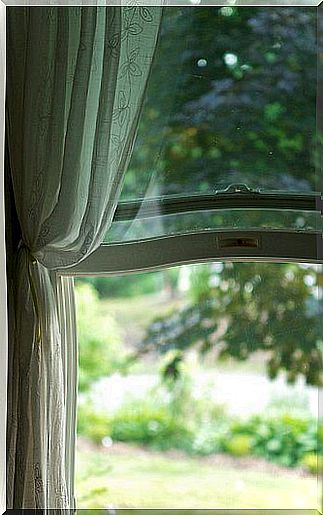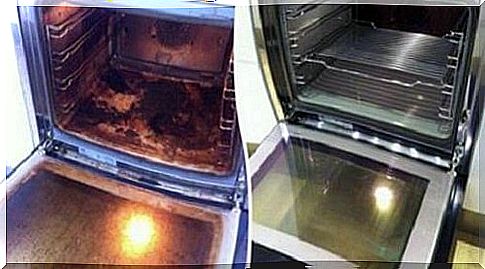8 Pieces Of Advice On How To Make Your Home Sustainable And Ecological
If electrical devices are left on standby and the red dot lights up, they not only consume electricity, but their lifespan is also shortened. It’s worth turning them off completely

We all want to give our children and grandchildren a healthy planet, one with the diversity of species and diversity that make it a beautiful home. Living ecologically helps.
A place that is free from pollution, where we can breathe clear, fresh air, that secures our balance today and our future tomorrow.
To make this dream come true, we all have to think ecologically , we need political changes and the implementation of projects that are intended to limit the release of CO 2 and chemical agents into the environment and atmosphere.
But not only cities, countries and their politicians have to pull together. Everyone can act ecologically, so we can all.
Small changes that are implemented every day make our home a place of sustainability and help to preserve our blue planet.
What do you think of putting the following recommendations into practice in order to design your home ecologically?
1. Make your home ecological: the use of heating and air conditioning
If you use heating and air conditioning to heat or cool your home, use them sensibly. In this way, we not only help nature, which has to provide less energy and cope with lower amounts of exhaust gas, but also our wallet.
- The heating should be set to around 20 ° C.
- In contrast, it is sufficient if the air conditioning system cools down to 26 ° C.
- And what temperature does warm water need? Here, 35 ° C is sufficient.
- Every single degree, more or less, will be noticeable on the bill.
2. What if we make better use of wind and sunlight?

It is certainly possible to redesign our home with a lot of money so that natural energy sources are optimally used. Even those who want to act ecologically are not always financially able to do so; after all, solar systems and new windows are expensive. What else can we do?
Also, following a few simple pieces of advice can save us huge sums of money in the long run:
- Take advantage of the sunlight. Coordinate your activities with daylight, wash laundry when you can then dry it in the sun and don’t need a dryer … I’m sure you can think of more examples!
- Paint your walls in light colors. That lifts the mood and brings light into your home.
- When you open multiple windows at the same time, you create a natural flow of air through your home. This allows you to cool it down a bit in summer and to ventilate it quickly and efficiently in winter.
3. A few fundamental changes in the kitchen

Many of the things we do in the kitchen can easily be made more sustainable and environmentally friendly. The same applies here: nature thanks you and your wallet too.
We’ll give you a few examples:
- Use the pressure cooker whenever possible. That saves time, energy and money.
- If you’re preparing something in the oven, open it as rarely as possible. Every time you look into the oven, the temperature inside drops by around 20 ° C. Then energy is needed to heat up again.
- Think ahead! If you need to thaw something, try not to use the microwave to do so. The faucet is not the best thawing aid either, so take the food out of the refrigerator the day before. Conversely, food that is still warm should cool down before it is placed in the refrigerator or freezer.
4. Do not put your electrical devices on standby
How often do you leave your radio, television, computer … on standby ? Many devices offer us the opportunity to save a few seconds when they are switched on again.
And then there is the router, which is also switched on 24 hours a day, even if we leave the house or sleep for several hours.
Almost every household has a device that runs on standby. The energy consumption adds up and then costs us a lot of money. Millions of people around the world make the same mistake and thereby pollute the environment.
Then there is also the little thing that the lifespan of electrical devices is shorter in standby mode than when they are switched off.
See the red dot as a red traffic light and turn off your devices completely.
5. Yes to energy-saving lamps
Energy-saving lamps and LEDs are more expensive than conventional light sources, but last much longer and use up to 80% less energy. In which lamps have you not yet replaced them?
6. Low consumption electrical appliances

For some years now, electrical appliances such as refrigerators, freezers and stoves have had a sticker stating their energy-saving class.
There is, for example, A ++ and A +++. Do you know what this means? These devices consume up to 70% less energy than one of the energy saving class A.
If a new acquisition is planned, it is therefore worth the effort to pay attention to the energy-saving class. Over time, electrical appliances in households will become more and more energy-efficient. Our home is becoming ecological and sustainable and the environment is being relieved step by step.
7. Turn on the washing machine and dishwasher when they are full
- Avoid unnecessary prewash and select the wash programs so that only the water temperature is reached, you really need. Use your laundry detergent sparingly.
- There are people who turn on their washing machine to wash their favorite pajamas and a towel. And the next day a pair of pants and a shirt. Most closets certainly have enough clothes to last a few days and enough laundry to collect a full load of laundry.
- The same goes for the dishwasher. Here, too, it is worth waiting until enough glasses and plates have come together and the dishwasher can be filled easily. The fewer washes and rinses, the better.
8. Good insulation for the apartment and house
Seal your windows with felt or putty so that hardly any heat is lost. Double-glazed windows are preferable to simple windows. Curtains, drapes and blinds also help to isolate the living space from the outside and save heating and air conditioning.
Sometimes it’s the little things that make big differences on the bill and can make our home ecological.









